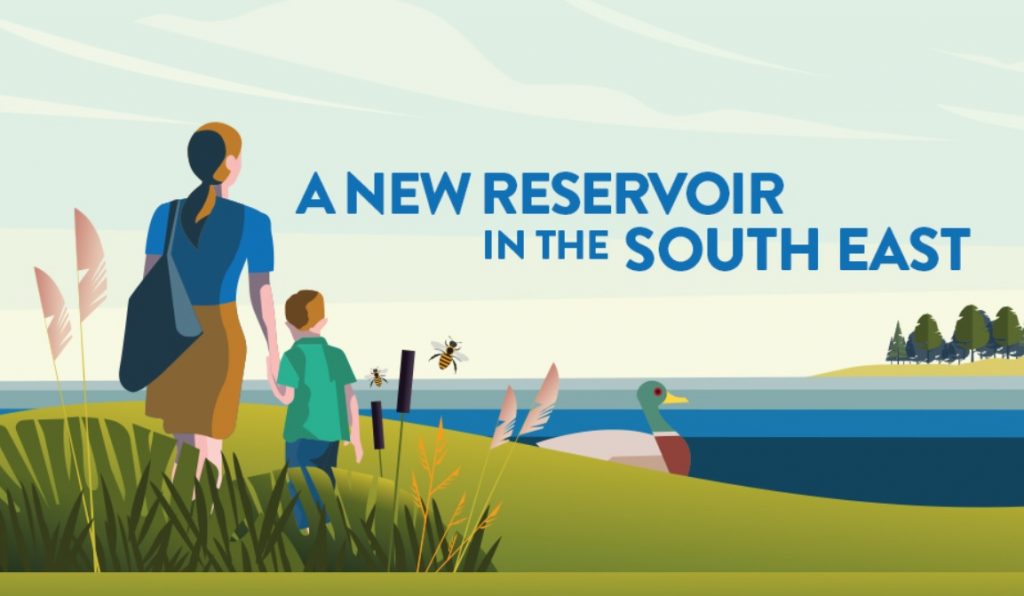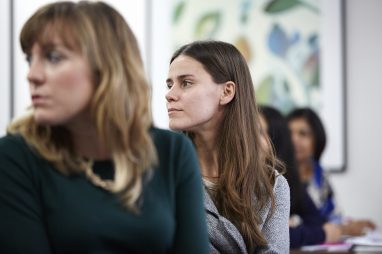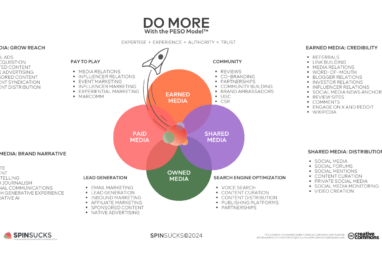Public consultation: Is it just a ‘tick-box’ exercise?
About the author
Clare Carlaw is a consultant specialising in community and stakeholder engagement. She wrote this article as part of a CIPR Professional PR Diploma assignment when studying with PR Academy.

We live in a world with constant change, constant progress and constant development – whether it is a new policy on climate change, a housing development being built or a new approach to water resources planning. In many organisations public consultation is often used as a defence: we went through due process, we engaged, we let people have their say…. but did we?

As communication and engagement professionals the challenge is have we really listened, have we really engaged, have we let everyone have their say or are we just ticking a box?
Public consultation is often tied into legal practice, case law and precedent. Planning requirements and development consent orders are often viewed as constraints. ‘Best practice’ has often been set by government consultations and activities – so it is understandable that we follow the logic of ‘if that’s how the government are doing it then it must be the right way’. We are driven to activities and practices set out by government bodies as failure to comply with such process can have serious consequences for any project we are working on.
My challenge however is: has this fear of getting it wrong stifled our approach – not following process has disastrous consequences for the water companies we are working with – so who wants to take that risk?
Consultation – what’s it all about?
Fundamentally ‘consultation’ is the act of exchanging information and opinions about something in order to reach a better understanding of it or to make a decision. (Cambridge dictionary definition). The emphasis for me needs to be on the word ‘exchange’. Exchange implies a two- way conversation, a discussion, a dialogue.
Let’s look at the water industry specifically. Throughout the Price Review and Water Resources Management Processes the regulators have called for us to consult with both our public and our stakeholders. The recent publication on the National Framework for Water Resources calls for us to ‘engage widely with interested groups’ and talks about informal consultations and the Water resources planning guidelines (published in July 2020) states both requirements for both pre-consultation and consultation giving us a hints about techniques such as:
- conducting questionnaires to gain views on your proposals
- using phone or in person surveys or other recognised survey techniques
- using social media to highlight the consultation
- innovative web-based engagement
As we move as an industry to look at long term resilience of our systems and a driving environmental ambition we are starting to see the emergence of large significant solutions which will require detailed planning application processes including Development Consent Orders (DCOs) which in themselves require public consultation so the bar is set high for us as an industry.
Too often public consultations involve a one off dry technical document, steeped in formal language with a set of hard to decipher questions which feel like a test of your academic accolades (I’m being harsh here but you get my point). In a society where the majority of us are a click away from anything we need the thought of a large proportion of our population trawling through a long detailed document… Well in my household if it came through the door it would sit in the pile of junk mail on the hall table waiting to be transferred to the recycling bin.
So how do we make ‘consultation’ more engaging, more accessible, more real?
Even the Planning Act of 2008 challenges applicants ‘to use a range of methods and techniques to ensure that they access all sections of the community’.
Communication is key
If we look back to 1969 at Sherry R Arnstein’s paper ‘Ladder of citizen participation’ (most probably the foundation of the development of community engagement) she considers a deliberately provocative take on the relationship between community and government by using a ladder as a metaphor for increasing access to decision-making power.
At the bottom of the ladder of citizen participation, you find “manipulation” and at the very top of the ladder “citizen control”. Even more provocatively she describes “information”, “consultation” and “placation” as “Tokenism”. Arnstein was challenging the democratic process of the time but her challenge is still relevant today – we cannot be satisfied that consultation is seen as Tokenism.
As communicators regardless of what industry we are in we have a breadth of arsenal in our belts.
Talk to your marketing and campaigns colleagues about engaging an audience. They may discuss the advantages of collaborating with social influencers or embracing user generated content. Some may refer to the fathers of PR campaigns such as Martin Fishbein and Icek Ajzen and their theory of reasoned action, Leon Festingner and his theory of cognitive dissonance or even Cialdini and his six principles of influence (Cialdini was referenced in the infamous ‘assorted weirdos’ job advert from Dominic Cummings).
There is so much we can consider to help us unlock some of the answers – I believe we do know how to develop engaging collateral, making it relevant and accessible to our audiences but we need to think of our consultees as an audience – that is key.
So, what can we do practically? Abelson et al in their paper ‘a review of public participation and consultation methods’ set out a useful guide to the strengths and weaknesses of a variety of methods and recommend uses. This is a useful checklist for us all. But what I am challenging you all to do is push that creative boundary – draw people into the conversation, allow them to engage at the level they want to, provide a variety of materials and opportunity and if you can make it more than a one-off exercise there are only positive outcomes.
Is digital the answer?
In many ways I think the simple answer is yes: digital does give us a wealth of opportunity to engage across a variety of formats. There have been push backs – do people just click and forget, does digital engagement exclude the older members of our society? There are some valid challenges there but the recent Covid-19 pandemic has certainly pushed back on some of those ‘ageist’ views with many of the ‘older generation’ now very much online; utilising a wide variety of digital platforms to shop, bank and connect with their family and friends. In terms of click and move on – this is within our gift – we need to capture our audience to ensure they don’t!
Digital engagement is certainly a useful tool and many of the market research agencies that are having to alter the way they do deliberative or focus group activities (due to Covid-19) are finding by going ‘on-line’ with activities they are able to more easily recruit those harder to reach communities and segments who for example have disabilities which previously would have made it difficult for them to attend sessions.
But again ‘digital’ should not be a lazy way of repeating what would have been done in paper form. A PDF version of a consultation document is probably not going to expand your audience much more than a hard copy version.
Digital technology can provide us with so much more. From short video clips, blogs and interactive questionnaires through to more open forums, interactive maps and even virtual reality tours.
One example I have seen of this recently was for Portsmouth Water’s Havant Thicket Reservoir consultation where a VR tour enabled the local community to experience for themselves what the reservoir will look like, what they would see and experience once it was built.
Out of all the materials produced for this consultation the VR tour received 53 % more views than any other item the team produced. It was relevant, local and different – we can learn lessons here.
It is all about choice
Reflecting on what I have discussed my key ‘take-away’ is we need to offer choice of ways to engage, we need to understand our consultees as an audience – what is relevant to them, do we have different segments of consultees, do we need to focus materials for age, ethnicity or socio-economic background and can we make the materials relevant to them in their local community.
I think there will always be a need for a paper copy of a consultation document and probably the need for meetings in a local village hall – some people do like that approach but as communicators our job is to provide materials relevant to our audience, and accessible to all.
Truly listening
I have focused in this article on the communication angle and the art of getting creative and interesting but there is for me a very fundamental part of consultation which makes it significantly different to a marketing or communication campaign and that is showing as an organisation you have heard what your consultees have said and you have truly listened.
In some ways I think this is the most challenging part. It is how if you get it wrong you disengage your communities, your customers, your audience.
The Leaders Report from WPP (a global communications and marketing company) spoke to communicators in over 50 countries but found only 11% of organisations allowed citizens to decide on how policies are made or budgets spent even though 77% of those organisations asked for their opinions. Using a quote from the WPP report ‘The problem is not that people don’t trust governments, but governments don’t trust people’ (Communication leader, Western Europe).
Consultation can not just tick the communication box, it is really important to consult in an engaging and effective way – but in doing so we must be truly listening and responding to views.
This is where organisations can build trust with their communities but if we get this wrong the damage is done.
Much has been written about the benefits of informing decisions and strengthening relationships between organisations and communities by consulting them, facilitating community ownership over outcomes, and viewing community engagement as a continuum. This can range from engagement strategies, such as consultation, to high-level strategies such as community empowerment.
As an industry we work with often complex long- term issues and challenges. The processes we talk about may excite the engineers out there but for the average person water and wastewater are never top of mind, but the decisions we make have a long-term impact on the communities and regions we serve so we need to engage and understand what those communities want – this cannot be just a tick box exercise – there is no value in that.
The value is in unlocking the conversation, informing, and involving our communities and actively encouraging participation in the decisions we make. I started this article talking about the definition of the word ‘consultation’ and it being a two-way conversation in order to reach a better understanding or to make a decision – that is the challenge I set you!
References
Abelson J, Forest P.G, Eyles J, Smith P, Martin E and Gauvin F.P. Deliberation about Deliberation: Issues in the Design and Evaluation of Public Consultation Process. McMaster University Centre for Health Economics and policy Analysis Research .Working Paper June 2001
Arnstein, S (1969) ‘A Ladder of Citizen Participation’. Journal of the American Institute of Planners
Cialdini, R (2006) Influence: The Psychology of Persuasion, Collins


